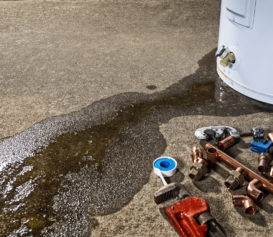Unit inspections have become increasingly more complex in the past year alone. Things like access during COVID times & increased requirements in different regions have turned simple checks into complicated walkthroughs.
Still, performing quality unit inspections is one of the most critical parts of maintaining a healthy property operations business. From positive resident interactions to data collection that can help your team budget and plan better, ongoing unit inspections have a major impact on your organization.
That’s why doing inspections the same way isn’t enough anymore. Operations teams are leaving behind clunky paper forms and rote processes to better adapt to changes – building the “new” unit inspection of the future.
What does the new unit inspection look like? We spoke with management teams to see how they’re adapting to ongoing changes, and compiled a few core standards worth applying to your team’s inspection process:
The Best Unit Inspections Are The Most Flexible Ones
Sounds counterintuitive, no? How can we have flexible unit inspections if we’re trying to ensure all inspections are thorough, and nothing falls through the cracks?
Your team knows all too well that no two inspections are ever exactly alike, even if the units are seemingly identical. So using the same old inspection form with the same inflexible fields might not be the best fit for every single visit.
For example, printed paper forms with fields for additional rooms, exterior areas, or specific equipment are a big waste of space (and time) when you’re performing inspections on units without those things. Any non-applicable fields might be better used as space for notes, or items and areas that are unique to a certain set of units or buildings. That’s not easily done when you’re working off of something that’s pre-printed.
So what do we mean by flexible unit inspections? Here are a few ways management teams are building & performing unit checks around flexibility – and why it’s a net positive for their team:
Inspection Choice
While some management teams have a one-size-fits-all unit inspection, many are building out a shortlist of approved, specific inspection types across their portfolio. This allows team members to select unit inspections that best meet their needs and the situation.
For example, your team’s annual inspections may be thorough and detailed, but intermittent inspections – safety inspections – have less steps, and still collect critical information on things like alarms, window guards, safety-related signage, and more. If you’re sending a maintenance tech to respond to a tenant request, it might be a best practice to log a quick safety inspection every time they’re onsite (instead of a full blown annual walkthrough).
Unit inspections can be organized in a number of different ways:
- By individual building
- By unit size or makeup
- By location (city, regional, or other specific area)
- By type (seasonal, annual, safety, equipment, etc.)
The more specific you are about why a particular inspection is important (and when it should be performed), the easier it is for your maintenance teams to log critical information – without wasting time.
Additionally, performing inspections using a mobile app or central operations platform helps your team capture the right information without sacrificing speed or quality. Letting managers select from a list of approved, ready-to-go unit inspection types gives them the flexibility they need without having to juggle different kinds of paperwork.
Inspection Creation and Adjustment
The best, most perfect inspection you’ve ever created will (unfortunately) not last forever. Whether it’s a change you want to make (adding a check for newly installed equipment) or one you have to make (a new local law or company policy), you need to ensure your inspection adjustment process is easy to do, and easy to implement.
That’s why paper inspections are better suited for the past. Reprinting and re-distributing inspection forms isn’t the most efficient process, and can create performance gaps.
A better way? Using an inspection app where easily-made adjustments are automatically pushed out to your team in the field. The next time an inspection is opened up, your adjustment is in place and ready to go.
Dynamic Inspections
The most flexible inspections are dynamic inspections – digital inspections built to respond to what your team is seeing and recording in the field.
Take this example – your team member spots an issue with the window during a routine inspection and marks the “poor condition” option on their inspection screen. Instead of having to type a paragraph about what’s wrong, they’re presented with several options you’ve created.
Maybe there’s a known problem with mold and windows at this particular building. Or this particular window has a broken frame, or cracked glass. By noting an issue, the inspection dynamically presents your inspector with a range of options you’ve pre-selected – giving you better, more detailed information.
And if there isn’t any issue with the window? The dynamic choices stay hidden, saving your team time and energy so they can focus on the rest of the inspection.
Dynamic inspections is a new trend that’s only growing – it’s definitely worth thinking about how dynamic inputs can help your team get more specific value out of inspections.
Good Recordkeeping Is More Than Storage
When it comes to unit inspections in 2021 and beyond, recordkeeping is king.
There are a few reasons why you’d want to ensure inspection records are organized and well-kept:
- You’re required to document specific checks/inspections for local law purposes
- You want to ensure thorough records for possible disputes or legal challenges
- You want to make move-outs and security deposit transactions as efficient and straightforward as possible
Whatever your reason for keeping unit inspections on file, your team’s recordkeeping plan needs to go beyond simple storage.
Inspection records should be easily searchable, and centralized – that is, accessible to any member of your team who might need it. That way, you’ll save time instead of wasting it poring over stacks of documents – bulky filing cabinets need not apply.
Recordkeeping is also an opportunity to get your inspection data to work for you. Reports shouldn’t just sit on your hard drive, waiting to be double-clicked. By implementing automation into your operations platform, you can automatically trigger action items, follow-ups, and ongoing work reminders from the data inside your records (dates, results, and more). You’ll never miss the next annual inspection, and you won’t forget about that bathroom fixture that needed replacing, either.
Is your team taking a look at improving inspections? Do you think you’ll try implementing any of the above best practices? Stay tuned – we’ll keep sharing tips from the field & industry-shifting trends going forward.




